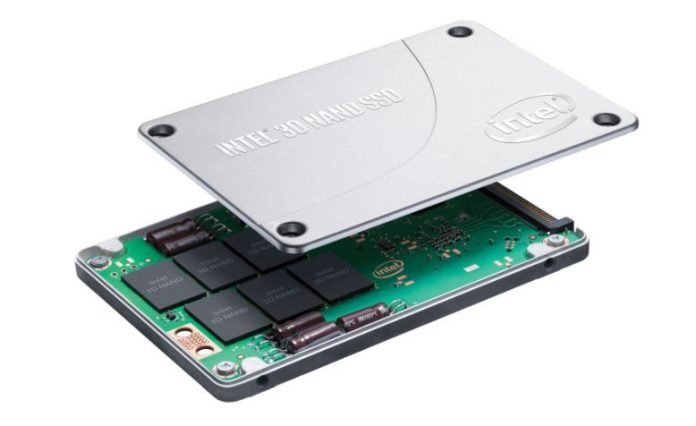Intel released details on a new series of low-cost NVMe SSDs, the Intel DC P4501 series. The Intel DC P4501 NVMe SSDs trade pure write endurance for a lower cost to procure and operate. Utilizing 3D NAND Intel is able to achieve higher physical density with this generation while also using less power. With both M.2 and 7MM form factors, the new SSDs allow for greater densities than larger form factor brethren.
Intel DC P4501 NVMe Series
With both 7mm 2.5″ and M.2 form factors, the physical layouts dictate performance and capacity points. Here are the quick spec comparison on the 7mm drives:

As you can see, the drives range in size from 500GB to 4TB. The impact of the 4TB drive is palpable as one can fit more drives into a chassis than with traditional 2.5″ 15mm NVMe SSDs. A server vendor can also increase the airflow to components downstream of the SSDs, which is important in 4-node in 2U designs.
For M.2 form factors, Intel is using a 22×110 mm form factor (or commonly called M.2 22110.) That longer form factor will fit most expansion boards and will fit larger server motherboard spots. We have seen many mITX, mATX and half-rack width server designs that only support M.2 2280. We commonly see M.2 22110 as the form factor for M.2 drives with power loss protection. Here is the Intel DC P4501 M.2 family:

For both form factors, endurance is acceptable. In our used enterprise SSD experiment, we found that most businesses are using their drives less than 0.3DWPD. With larger, read-optimized drives, we do not expect to see high write figures such as a full 4TB written/ day on a 4TB drive.
Final Words
We are going to see more NVMe related releases this year as SATA is de-emphasized. New server platforms should bump the PCIe count to allow for more NVMe SSDs to be utilized. We are already seeing these designs start to show in terms of Intel Skylake-SP, Intel Atom C3000, and AMD EPYC. As the next generation of server platforms will rely on both U.2 and M.2 SSDs for storage. One possible competitor is the M.3 NVMe SSD form factor we broke the news of recently.





And prices are? If you stress “low-cost” in the title, it would be great to see actual values too. :-) Thanks!
They are free, but they aren’t going to be available until November 1st, 2250